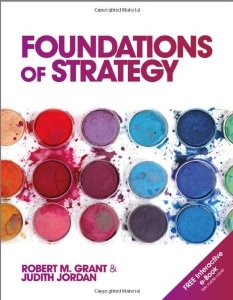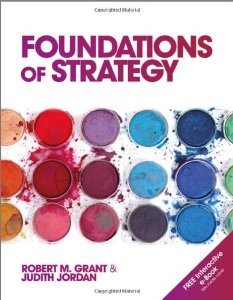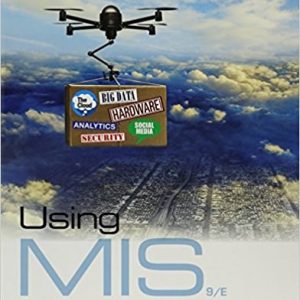This is completed downloadable of Test Bank for Foundations of Strategy, 1 Edition : Robert M. Grant

Product Details:
- ISBN-10 : 0470971274
- ISBN-13 : 978-0470971277
- Author: Robert M. Grant
Foundations of Strategy is a new concise text aimed at both undergraduate students and Masters students. With the needs of these students in mind, Robert Grant and Judith Jordan write in an accessible style, with a clear, comprehensive approach and sound theoretical depth.
Extensive teaching materials such as Case Teaching notes, an Instructor’s Manual, Test Bank and PPT slides are available on an accompanying website – www.foundationsofstrategy.com
The website also features extra, longer cases written by Robert Grant and access to a simulation for use in teaching.
Students have access to the entire text as an e-book with embedded video clips for each case study, and self test questions to check understanding.
Table of Content:
- 1: The concept of Strategy
- Introduction and objectives
- The role of strategy in success
- A brief history of strategy
- Strategy today
- Strategic management of not-for-profit organizations
- The approach taken in this book
- Summary
- Summary table
- Further reading
- Self-study questions
- Notes
- 2: Industry analysis
- Introduction and objectives
- From environmental analysis to industry analysis
- The determinants of industry profit: Demand and competition
- Analysing industry attractiveness
- Applying industry analysis to forecasting industry profitability
- Using industry analysis to develop strategy
- Defining an industry
- Reviewing the five forces of competition framework
- Segmentation analysis
- Dealing with dynamic competition
- From industry attractiveness to competitive advantage: Identifying key success factors
- Summary
- Summary table
- Further reading
- Self-study questions
- Notes
- 3: Resources and capabilities
- Introduction and objectives
- The role of resources and capabilities in strategy formulation
- Identifying the organization’s resources and capabilities
- Appraising resources and capabilities
- Developing strategy implications
- Summary
- Summary table
- Further reading
- Self-study questions
- Notes
- 4: The nature and sources of competitive advantage
- Introduction and objectives
- How competitive advantage emerges and is sustained
- Types of competitive advantage: Cost and differentiation
- Porter’s generic strategies and being ‘stuck in the middle’
- Summary
- Summary table
- Further reading
- Self-study questions
- Notes
- 5: Industry evolution and strategic change
- Introduction and objectives
- The industry lifecycle
- Managing organizational adaptation and strategic change
- Managing strategic change
- Summary
- Summary table
- Further reading
- Self-study questions
- Notes
- 6: Technology-based industries and the management of innovation
- Introduction and objectives
- Competitive advantage in technology-intensive industries
- Strategies to exploit innovation: How and when to enter
- Competing for standards
- Implementing technology strategies: Creating the conditions for innovation
- Summary
- Summary table
- Further reading
- Self-study questions
- Notes
- 7: Corporate strategy
- Introduction and objectives
- The scope of the firm
- Key concepts for analysing firm scope
- Diversification
- Vertical integration
- Managing the corporate portfolio
- Summary
- Summary table
- Further reading
- Self-study questions
- Notes
- 8: Global strategies and the multinational corporation
- Introduction and objectives
- The implications of international competition for industry analysis
- Analysing competitive advantage in an international context
- The international location of production
- How should firms enter foreign markets?
- Multinational strategies: Global integration vs. national differentiation
- Strategy and organization within the multinational corporation
- Summary
- Summary table
- Further reading
- Self-study questions
- Notes
- 9: Realizing strategy
- Introduction and objectives
- From strategy to execution
- Organizational design: The fundamentals of organizing
- Organizational design: Choosing the right structure
- Organizational culture
- Summary
- Summary table
- Further reading
- Self-study questions
- Notes
- 10: Current trends in strategic management
- Introduction and objectives
- The new environment of business
- New directions in strategic thinking
- Redesigning organizations
- The changing role of managers
- Summary
- Summary table
- Further reading
- Self-study questions
- Notes
- Glossary
- Index
- End User License Agreement





